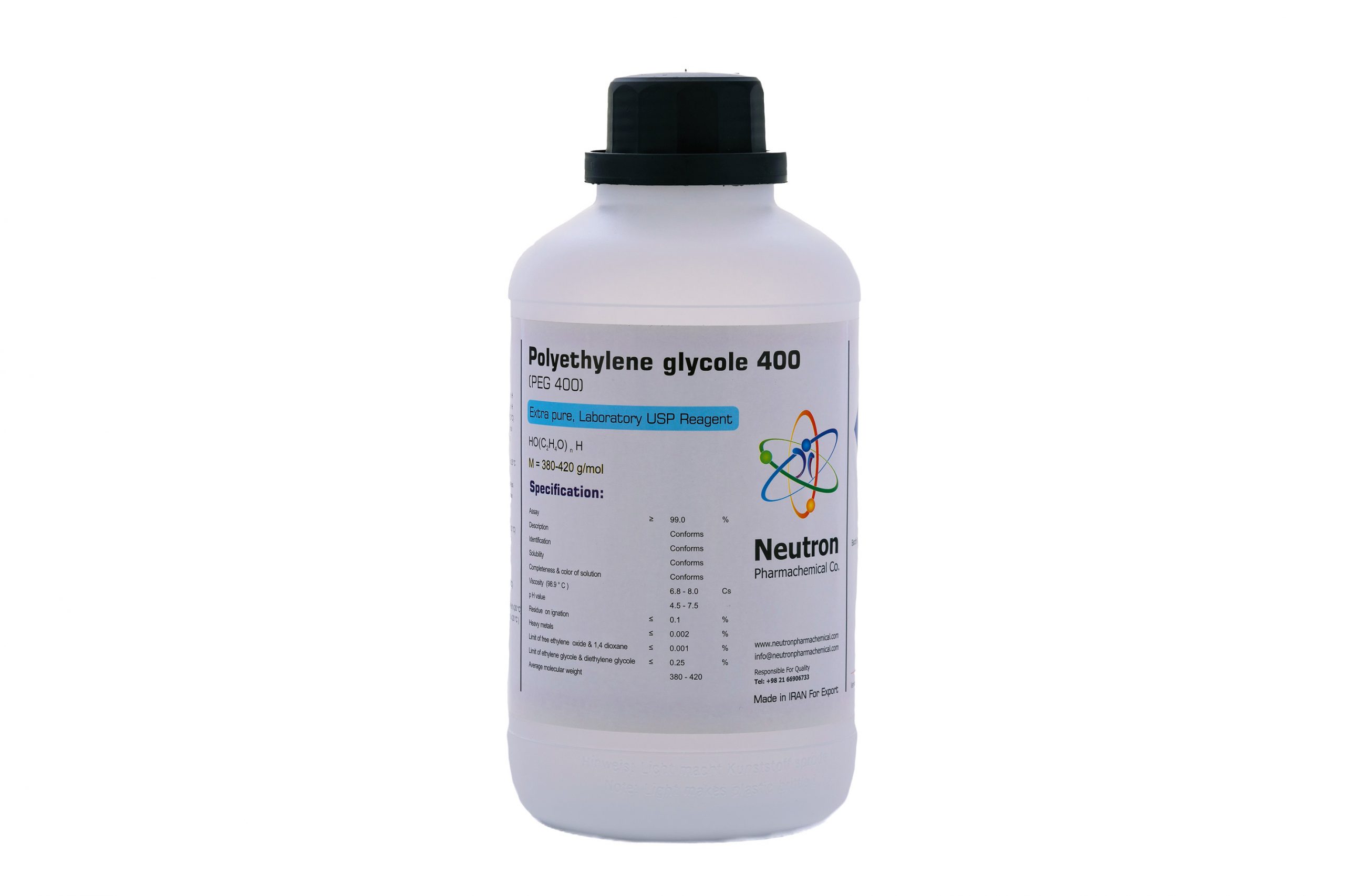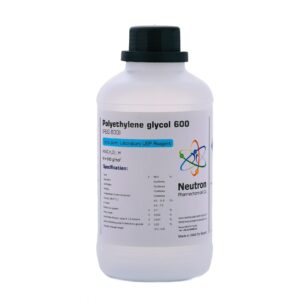پلی اتیلن گلایکول 400
| Formula | HO(C2H4O) n H |
| Chemical formula | HO(C2H4O) n H |
| Density | 1.12 g/cm3 (20°C) |
| Molar mass | 380 – 420 g/mol |
| CAS number | 25322 -68-3 |
| HS Code | 39072011 |
| Storage | Store at 15 to 25 °C |
| SDS | available |
| Odour | almost oduorless |
| Form | liquid to viscose |
| Color | colourless |
| Ignition tempratue | 360 °C |
| p H value | 5 – 7 (100 g/l 20 °C) |
| Solubility in water | soluble 20 °C ) |
| Flash point | 240 °C (0 °C) |
| Boiling point | ~ 250 °C |
| Melting point | 4 – 8 °C |
| Vapour pressure | ~ 0.1hpa (20 °C) |
| Thermal decomposition | ~ 220 °C |
| Viscosity dynamical | 105 – 140 mPa*s (20 °C) |
| Viscosity kinematic | 97 -110 mm2/s (20 °C ) |
| Assay | ≥ | 99.0 | % |
| Description | Conforms | ||
| Identification | Conforms | ||
| Solubility | Conforms | ||
| Completeness & color of solution | Conforms | ||
| Viscosity (98.9 ° C ) | 6.8 – 8.0 | Cs | |
| p H value | 4.5 – 7.5 | ||
| Residue on ignation | ≤ | 0.1 | % |
| Heavy metals | ≤ | 0.002 | % |
| Limit of free ethylene oxide & 1,4 dioxane | ≤ | 0.001 | % |
| Limit of ethylene glycole & diethylene glycole | ≤ | 0.25 | % |
| Average molecular weight | 380 – 420 |
Polyethylene glycol 400 (PEG 400) is a low-molecular-weight polymer of ethylene oxide with an average molecular weight of approximately 400 g/mol. It appears as a clear, colorless, and odorless liquid commonly used as a solvent, plasticizer, and in pharmaceutical formulations.
🏭⚗️ Production
PEG 400 is produced by the polymerization of ethylene oxide with controlled reaction conditions to achieve the desired average molecular weight. The process involves ring-opening polymerization catalyzed by alkaline catalysts.
🔬 Properties
PEG 400 is a hygroscopic, water-soluble liquid with low toxicity. It is miscible with water and many organic solvents. It has a low viscosity compared to higher molecular weight PEGs and exhibits excellent solubilizing properties. PEG 400 is chemically stable, non-volatile, and non-irritating.
🧪 Applications
• Widely used as a solvent and vehicle in pharmaceutical formulations including topical, oral, and parenteral products.
• Acts as a plasticizer in manufacturing processes.
• Used in cosmetics as a humectant and skin-conditioning agent.
• Employed in industrial applications such as lubricants, antifreeze agents, and in the production of resins.






